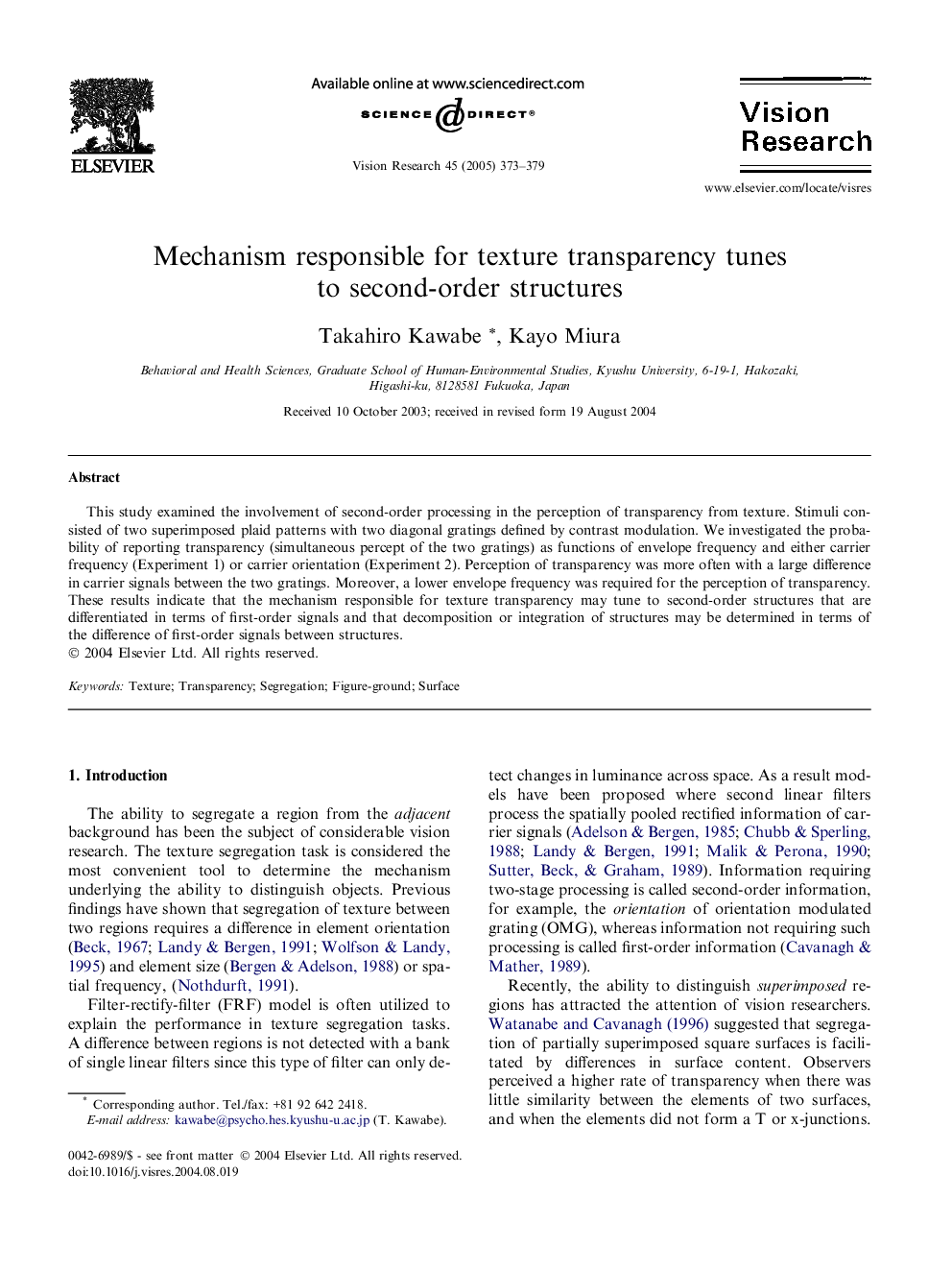| Article ID | Journal | Published Year | Pages | File Type |
|---|---|---|---|---|
| 9348849 | Vision Research | 2005 | 7 Pages |
Abstract
This study examined the involvement of second-order processing in the perception of transparency from texture. Stimuli consisted of two superimposed plaid patterns with two diagonal gratings defined by contrast modulation. We investigated the probability of reporting transparency (simultaneous percept of the two gratings) as functions of envelope frequency and either carrier frequency (Experiment 1) or carrier orientation (Experiment 2). Perception of transparency was more often with a large difference in carrier signals between the two gratings. Moreover, a lower envelope frequency was required for the perception of transparency. These results indicate that the mechanism responsible for texture transparency may tune to second-order structures that are differentiated in terms of first-order signals and that decomposition or integration of structures may be determined in terms of the difference of first-order signals between structures.
Related Topics
Life Sciences
Neuroscience
Sensory Systems
Authors
Takahiro Kawabe, Kayo Miura,
